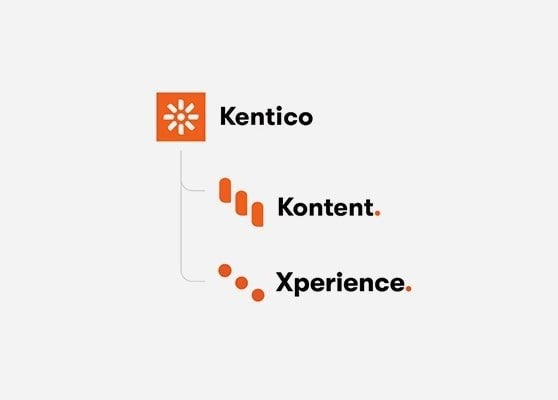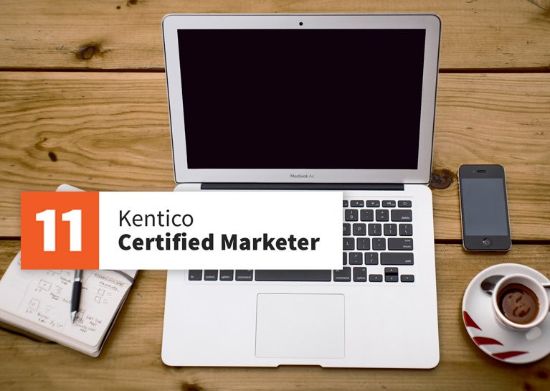
It has been thoroughly covered how the number of technology options and decisions facing marketers for creating their digital marketing suite have exploded over the last few years. We have also spent a lot of time talking about how shifts in technology are uniquely aligning with the changing needs of marketers to create new opportunities, but that also means more decisions to make.
Marketers are now facing not only the decision of what content management system (CMS) is right for them, but rather what type of content management system is right for them as the debate between conventional web content management systems (WCMS) and a new breed of “headless” content platforms continues. While BlueModus does work with several conventional and headless content management systems, one of our flagship partners – Kentico Software – has developed one of each – and I often hear prospective new clients asking the question, what is right for my company - Kentico Xperience or Kentico Konent?
So, how do you make that decision? Before we talk how, let us first discuss what each is. Put simply, Kentico Xperience is a conventional CMS where a “website manager,” providing functions and processes required to manage a website. This includes content, of course, but also its presentation, site navigation, user experience, and other website management functionality like submission forms, authentication, and so on. Kentico Kontent is a headless CMS and, also put simply, is essentially a repository for content that provides your business with a way to semantically broadcast that content on virtually any channel or interface. Kentico often refers to Kontent as a “Content as a Service (CaaS),” functionally echoing SaaS or cloud computing, where assets and functionality are hosted in one place for use across channels and in many differing formats.
Before I go into what I think should guide your decision between either Kentico Xperience or Kentico Kontent or fundamentally choosing a conventional CMS or headless CMS, I think it is important to address some common misconceptions and rule out what I think shouldn’t drive your decision.
Shouldn’t: Digital Maturity
When it comes to choosing which of these is right for your business, the decision is often framed around the idea of “maturity”, with many vendors offering up organizational surveys and digital maturity definitions to help determine whether an organization is “mature” enough to leverage the latest and greatest headless content service. It is easy to see why this is a tempting way to think about it. In technology, the newest thing is almost always developed as an improvement over something older, and in fact, the arrival of something new often signals the coming end to what came before. In this case, though, I do not think that is accurate – at least not yet.
While both conventional and headless CMSs fill the same fundamental role, their conceptual approaches to that task are so dramatically different that it is sometimes difficult to view them as on a continuum or as one being a logical progression from the other. For the time being, at least, I would call this more of an evolutionary branch than an evolutionary step.
Shouldn’t: Content Strategy
As I have written before, I believe that a content-first approach, with a strong unified content model as the central and driving force to your technical implementation, is a must for anyone undertaking a new digital marketing project, CMS like Kontent without a strong content model, it is becoming more and more the case that a conventional WCMS will struggle to meet its full potential without that same strong content model. In fact, our CTO, Dave Conder, held an extensive 3-part workshop on Xperience’s most recent versions, and the importance of a strong content model.
Strictly speaking, you can get away with less of a focus on structured content in a conventional CMS, but that is becoming less and less the case, and I would caution anyone who chooses a CMS platform based on the hope that they do not need to exercise as much discipline when managing their content.
So, if none of those things should weigh heavily into your decision, what should? I believe that it comes down to this:
Where do you gain efficiency?
Gaining efficiency is the ever-sought-after grail of every company or organization that has ever existed - or at least those who have hoped to persist, as well. Here is the good news, though - these newer platforms have incorporated many lessons learned from how quickly previous platforms became outdated. Much of the convergence of technology and marketing that is happening right now revolves around frameworks and platform approaches specifically intended to be agile, flexible, and easy to upgrade. This helps take some of the weight off the tedious task of comparing feature matrices and trying to figure out whether one platform’s approach to a specific feature has more longevity than another’s.
This allows you to focus in on the foundational areas that really need to be supported for the long haul. Some of these will differ from organization to organization, but here are a few examples of these kinds of foundational concepts from our experience.
Should: Channel Focus
The number of ways that our content can be consumed seems to multiply daily, and I often contend that many marketers spend a disproportionate amount of time agonizing over how their website looks on their workstation when that view may represent the experience for a small minority of their actual users. There is a definite trend toward more channels; not less, but it does still bear consideration.
How does this fit into the efficiency conversation? If you have a website, a mobile app, maybe a wearable, and you are also pushing content to social media, then it would be inefficient to require your content editors to manage all that content through an experience that forces them to focus on and navigate the desktop web experience just to get anything done. Say that you are a B2B wholesale product supplier and most of your traffic for the foreseeable future is going to be office managers on their workstations, placing orders for the same products they will likely be buying from you for years. In this case, using a headless platform like Kontent, would require you to also manage a separate web front-end that needs to be regularly maintained by a developer. This would likely slow the whole process down and waste budget.
Should: Integrated Tools
A conventional CMS traditionally turns on the idea of an all-in-one or “suite” solution. Since the website is the focus from a channel standpoint, it is easy enough to integrate all kinds of other tools to help manage that experience. A headless CMS, holding little concern for the method, channel, or device your content will be served on, continues that theme in the peripheral tools offered. If you are already going to be taking responsibility for building out each channel of distribution for your content, it is not a stretch to assume that you would want full control over which additional tools or integrations you want to leverage, creating your own “stack” of technologies that exactly fit your needs.
This “Stacks vs. Suites” decision is frequently addressed very prescriptively, with arguments over which approach is inherently better but again, I would recommend looking at it from the standpoint of efficiency. If your team has favorite stand-alone tools that are already well-regarded and embedded into your processes, it makes sense that you would likely find more efficiency in being able to integrate the exact combination of tools and custom code to create your ideal stack of capabilities. Conversely, if your use-cases are straightforward, but your team is daunted with managing the same content across multiple experiences, then a fully integrated suite that allows – for example – website content to be automatically populated into newsletter templates without having to be rewritten may be exactly what the doctor ordered.
Should: Content Management and Governance
Content management is the name of the game for any of these platforms, and both Xperience and Kontent offer excellent tools for managing content, workflows and approvals, and publishing control. This can make this factor one of the hardest to find differentiation in, until you start thinking about it from the standpoint of – you guessed it – efficiency.
Think about who is responsible for content in your organization and what their roles are. If your content team is comprised of the now-old-fashioned multipurpose digital marketer, and you have one or a few people who will be managing content, setting up campaigns, reviewing analytics, updating layouts, and sending newsletters, then you are likely to gain a lot of efficiency from having all those tasks together in a single system. But on the other side, imagine that you are a publishing house with a staff of writers and maybe some guest contributors. Their only goal is to get their articles written, and they may never have seen a digital marketing tool or a line of HTML in their lives. Their process would be slowed by more sophisticated tool sets, and you are likely to gain more efficiency from very simple, targeted experiences focused specifically on their content entry or edit tasks. Other specialists on the team that may manage campaigns or newsletters may also benefit from their own dedicated tools, since they are not tasked with managing anything else anyway.
It is seldom this simple
These examples are clean and easy to discuss, but many organizations will fall somewhere in the middle. Helpfully, the platforms themselves have extended olive branches toward the middle of the aisle with features that can cover some gaps. For Kontent, Kentico has developed a feature called “Web Spotlight” that offers a set of more website-specific management capabilities, allowing marketers to manage navigation and some elements of layout from the otherwise-headless content platform. In Xperience, it is very straightforward to access structured content from the CMS via an API, allowing you to pull content from the conventional CMS into any other channel, much like you would a headless platform.
While this can make the line between the platforms a bit blurrier, it is important to remember that they are still foundationally in one camp or the other. These tools help with edge cases, but they do not make the tools operate efficiently as something they are not. For example, the Web Spotlight can help allow for some level of web channel control when it is needed, but managing every aspect of the website experience, including page layouts and other design elements, would still be a grueling task in Kontent.
Every case is unique but hopefully the ideas I presented here will help you focus your decision-making process on Kentico Xperience or Kentico Kontent – and even a conventional CMS or headless CMS - on the differentiators that are going to be most important to your team’s long-term efficiency and success.
I am always happy to chat more on your specific needs to help you better evaluate either platform. I can be reached at bcline@bluemodus.com.










